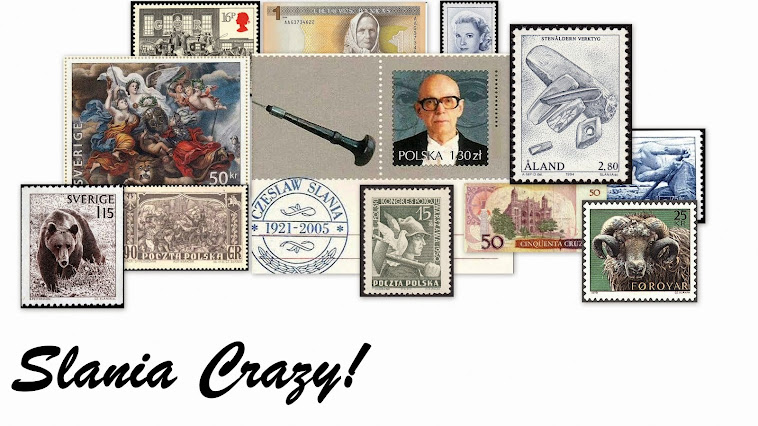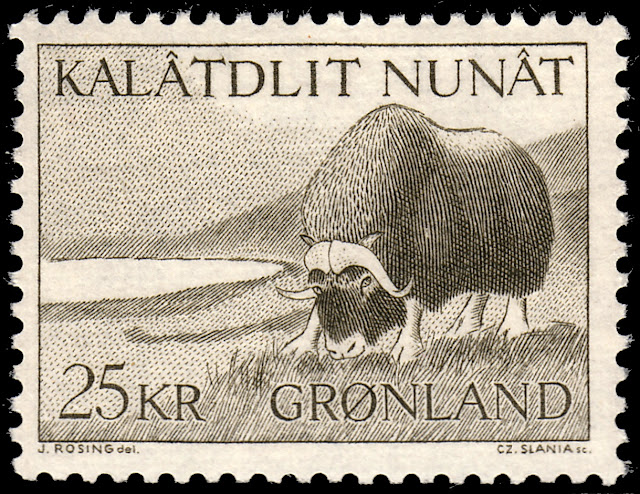The name given to these gentle giants of the ocean has rather shameful origins. The right whale was so named by whalers who considered them the "right" whale to hunt due to their docile nature, their plentiful oil and the amounts of baleen they can provide.
These majestic creatures are also known as the black whale. There are three species of black whale:: the North Atlantic right whale (E. glacialis), the North Pacific right whale (E. japonica) and the Southern right whale (E. australis). On average, these whales grow up to 18 metres long, making them larger than humpbacks and grays, but smaller than the mighty blue whale. Black whales have a tendency to swim close to coastlines where the water is warmer and food sources more abundant. Indeed, black whales can sometimes be seen from the coast, frolicking in the offshore waters.
***
On 5 March 1970 Greenland issued a stamp featuring the great tail of a black whale off the coast of the island of Disko Island. This stamp was designed by J. Rosing and engraved by Czeslaw Slania. Again this designer engraver combo has created a fantastic stamp, crammed with visual appeal.
In the foreground we see the glorious tail of a black whale diving, perhaps for another feed. In the background to the middle left we can see a second black whale coming up for air, shooting a geyser of water from its distinct V-shaped blowhole. And dominating the horizon in the background is Disko Island. Perhaps there are some spectators on those cliffs watching the spectacle with fascinated wonder.
Until next time...



